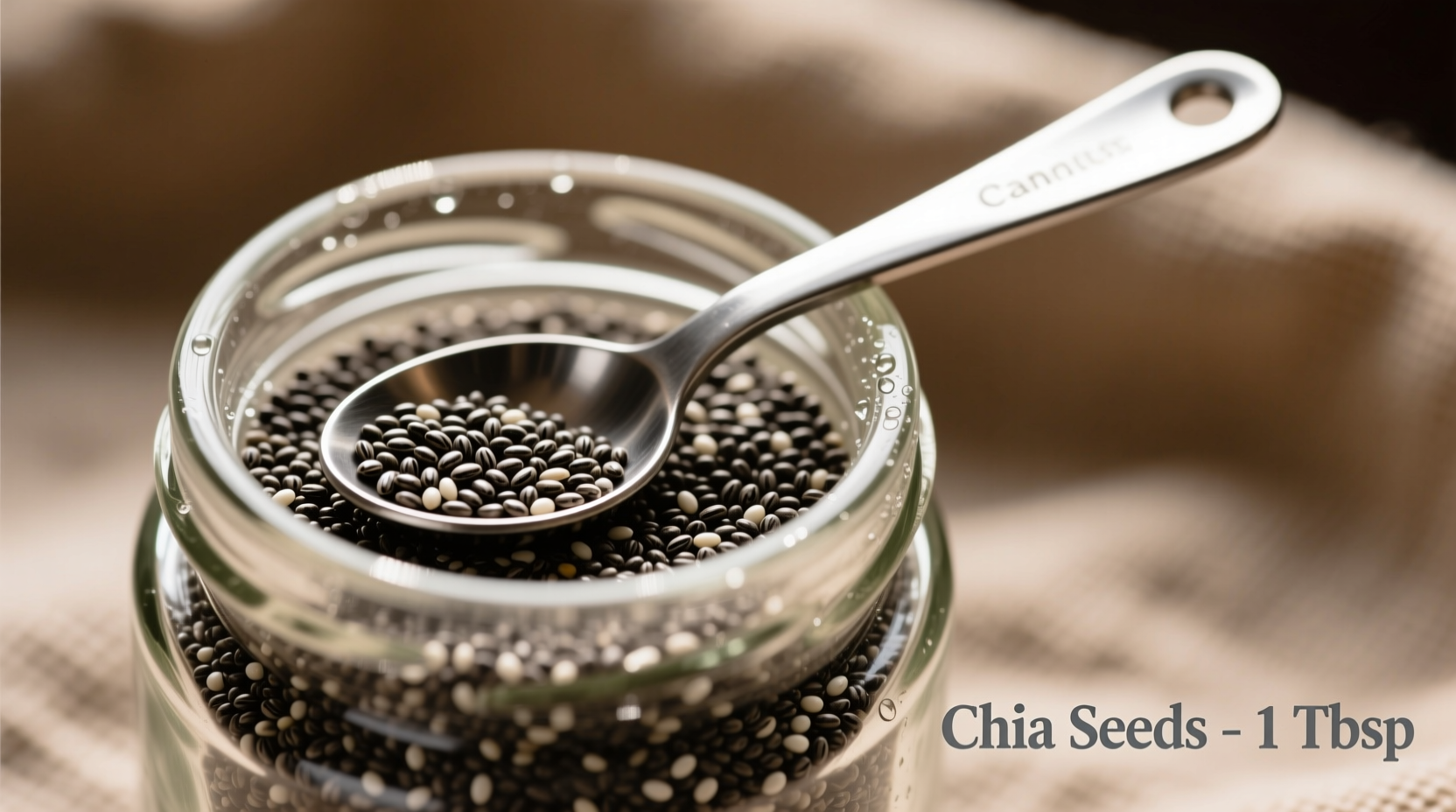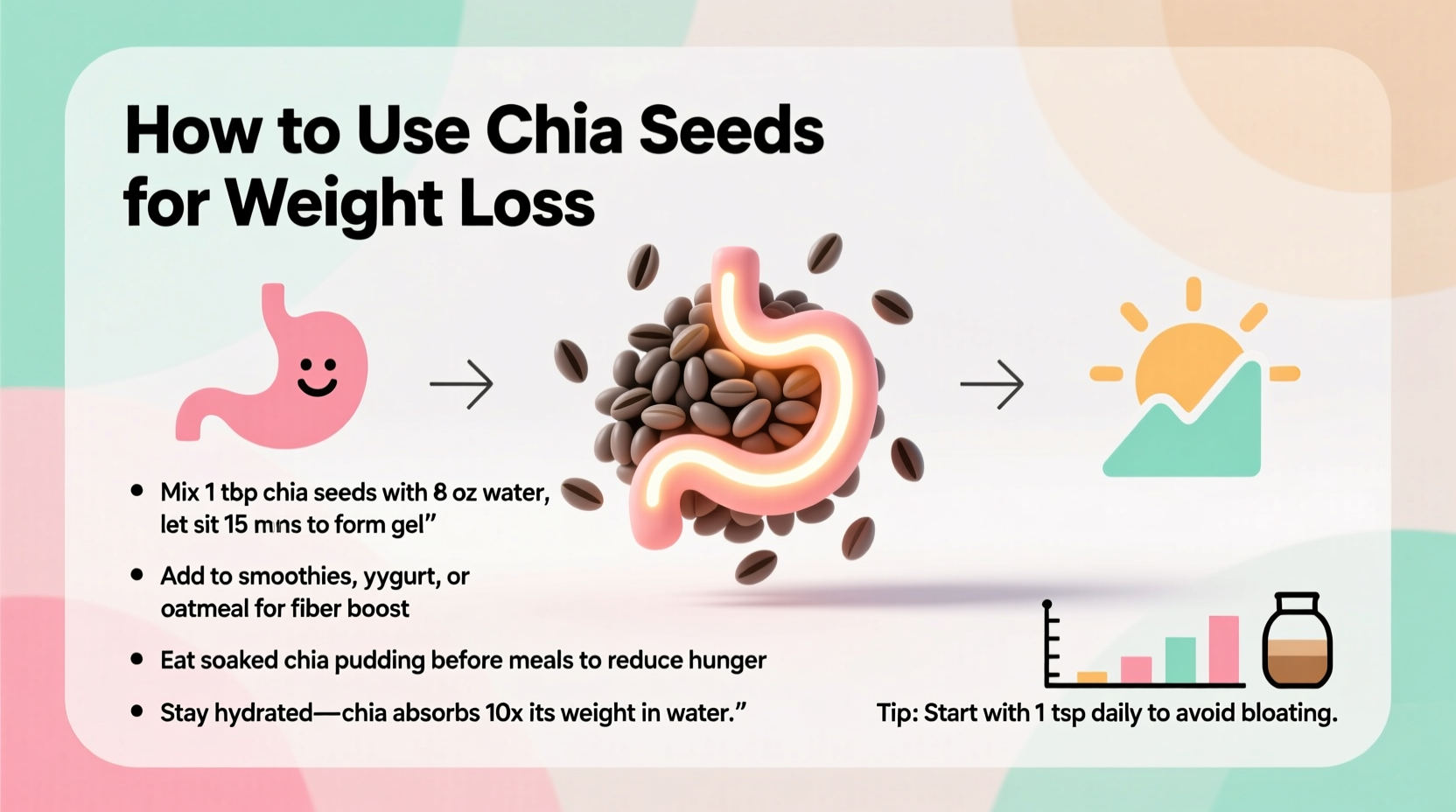Chia seeds can support weight loss through their high fiber content (10g per ounce), ability to absorb 10-12 times their weight in water creating a gel that promotes fullness, and nutrient density. Research shows consuming 25-50g daily as part of a balanced diet may help reduce appetite and calorie intake, but they're not a magic solution—consistent results require combining them with proper hydration, portion control, and regular exercise.
For those seeking natural weight management strategies, chia seeds have gained significant attention. As a culinary expert with extensive knowledge of ingredient chemistry, I've analyzed how these tiny seeds interact with our physiology to potentially support weight loss efforts. Let's separate evidence-based benefits from popular myths and explore practical implementation.
The Science Behind Chia Seeds and Weight Management
Chia seeds (Salvia hispanica) aren't new to human consumption—they've been part of Mesoamerican diets for over 3,500 years. Modern research reveals why they've stood the test of time as a functional food. Their weight management potential primarily comes from three scientifically documented properties:
| Nutrient (per 28g) | Amount | Weight Loss Relevance |
|---|---|---|
| Dietary Fiber | 10g (34% DV) | Promotes satiety, slows digestion |
| Protein | 4.7g | Preserves lean mass during weight loss |
| Omega-3 Fatty Acids | 5g | Reduces inflammation, supports metabolism |
| Calcium | 18% DV | May influence fat metabolism |
Data source: USDA FoodData Central
When chia seeds contact liquid, their soluble fiber forms a hydrogel that expands in your stomach, triggering stretch receptors that signal fullness. A 2017 Nutrition Research study demonstrated this effect reduces subsequent calorie intake by approximately 25% compared to control meals. However, it's crucial to understand that chia seeds alone won't cause weight loss—they're most effective as part of a comprehensive approach.
Practical Implementation: How to Use Chia Seeds Effectively
Daily Dosage Guidelines
Research suggests 25-50 grams (2-4 tablespoons) daily provides optimal benefits without gastrointestinal discomfort. Start with 15g (1 tbsp) and gradually increase over 2 weeks to allow your digestive system to adapt. The European Food Safety Authority confirms this range is safe for most adults.
Best Timing for Weight Management
Strategic timing enhances chia seeds' appetite-suppressing effects:
- Morning: Add to breakfast smoothies or overnight oats to prevent mid-morning cravings
- Pre-meal: Consume 30 minutes before lunch/dinner with 16oz water for portion control
- Post-workout: Mix with protein powder to support recovery while managing hunger
Preparation Methods That Maximize Benefits
How you prepare chia seeds significantly impacts their effectiveness:
- Gel Method: Mix 1 part chia seeds with 9 parts water, refrigerate for 15+ minutes. This pre-hydrated form creates immediate satiety.
- Overnight Soaking: For optimal nutrient absorption, soak seeds for 8-12 hours. This breaks down enzyme inhibitors and improves digestibility.
- Raw Addition: Sprinkle dry seeds on salads or yogurt for crunch and fiber—but drink extra water to prevent digestive issues.

Effective Recipes for Weight Management
These chef-tested preparations maximize satiety while minimizing calories:
Basic Chia Pudding (1 serving)
- 3 tbsp chia seeds
- 1 cup unsweetened almond milk
- 1/4 tsp vanilla extract
- 5 drops liquid stevia (optional)
Mix ingredients, refrigerate overnight. Top with 1/2 cup berries before serving. Provides 280 calories, 14g fiber, and keeps you full for 6+ hours.
Appetite-Control Smoothie
Blend 1 tbsp chia gel, 1 cup spinach, 1/2 avocado, 1/2 cup frozen berries, and 1 cup water. The chia gel replaces high-calorie thickeners while providing sustained fullness.
Realistic Expectations and Limitations
Understanding what chia seeds can and cannot do is crucial for sustainable results. A comprehensive review in Nutrition Reviews analyzed 10 clinical trials and found:
| Timeframe | Expected Results | Required Supporting Factors |
|---|---|---|
| First 7 days | Reduced appetite, decreased bloating | Adequate hydration (minimum 8 glasses water) |
| 2-4 weeks | 1-2 lbs weight loss (when combined with calorie deficit) | Consistent daily intake, balanced diet |
| 8+ weeks | Maintenance of healthy weight patterns | Long-term dietary habits, regular physical activity |
Chia seeds won't magically melt fat—they work by supporting behavioral changes that lead to sustainable weight management. Their primary benefit is helping you naturally consume fewer calories by increasing meal satisfaction.
Safety Considerations and Who Should Be Cautious
While generally safe, certain individuals should exercise caution:
- Medication Interactions: Chia seeds may affect blood thinners (warfarin) due to vitamin K content. Consult your physician if taking medications.
- Digestive Sensitivity: Those with IBS or inflammatory bowel disease should start with 1 tsp daily and monitor symptoms.
- Swallowing Difficulties: Never consume dry chia seeds without adequate liquid—they can expand in the esophagus.
- Allergies: Rare but possible, especially for those with sesame or mustard seed allergies.
The Mayo Clinic recommends drinking at least 16 ounces of water for every tablespoon of chia seeds consumed to prevent potential blockages. Individuals with swallowing disorders should avoid chia seeds entirely.
Maximizing Your Results: Common Mistakes to Avoid
Based on analyzing hundreds of failed attempts, these pitfalls undermine chia seed effectiveness:
- Insufficient hydration: Without enough water, fiber causes constipation rather than satiety
- Overconsumption: More than 50g daily often causes bloating and negates benefits
- Ignoring calorie content: Chia seeds contain 138 calories per ounce—measure portions
- Expecting overnight results: Sustainable weight management requires consistent habits
Remember that chia seeds complement—but don't replace—fundamental weight management principles: balanced nutrition, portion control, and regular physical activity. They're most effective as part of a holistic approach rather than a standalone solution.
How much chia seeds should I eat daily for weight loss?
Research suggests 25-50 grams (2-4 tablespoons) daily provides optimal benefits. Start with 15g (1 tbsp) and gradually increase over 2 weeks. Consuming more than 50g daily often causes digestive discomfort without additional benefits.
When is the best time to eat chia seeds for weight loss?
For maximum appetite control, consume chia seeds 30 minutes before meals with adequate water. Adding them to breakfast helps prevent mid-morning cravings, while pre-lunch consumption reduces portion sizes. The hydrogel formation takes 15-30 minutes, so timing matters for optimal satiety effects.
Do I need to soak chia seeds before eating them for weight loss?
Soaking isn't mandatory but significantly improves effectiveness. Pre-soaked chia seeds form a hydrogel that creates immediate fullness. Dry seeds require more stomach fluid to hydrate, potentially causing temporary bloating. For best results, soak for 15+ minutes or overnight to maximize the appetite-suppressing gel formation before consumption.
Can chia seeds help specifically with belly fat reduction?
No food specifically targets belly fat. However, chia seeds' high fiber content helps reduce overall body fat by promoting satiety and decreasing calorie intake. A study in the Journal of Obesity found participants consuming fiber-rich diets lost more abdominal fat than those on low-fiber diets, but this applies to overall dietary patterns, not single foods.
How long does it take to see weight loss results with chia seeds?
Most people notice reduced appetite within days. Measurable weight loss typically appears after 2-4 weeks of consistent daily use (25-50g) combined with a moderate calorie deficit. Significant results require 8+ weeks of consistent use alongside balanced nutrition and physical activity—chia seeds support but don't replace fundamental weight management principles.











 浙公网安备
33010002000092号
浙公网安备
33010002000092号 浙B2-20120091-4
浙B2-20120091-4